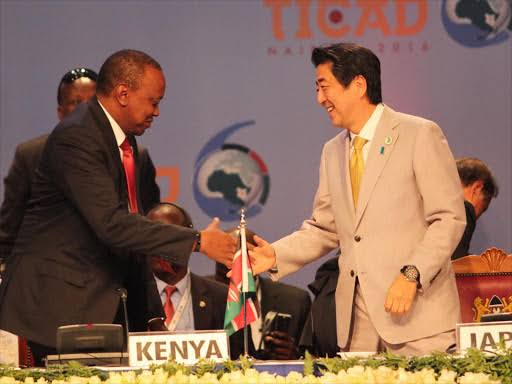For the second year in a row, China has reduced new financial commitments to Kenya’s development projects by roughly four times in seven years, sliding behind Japan on the list of top bilateral lenders to the East African nation.
According to a report, the Treasury has classified Japan as the top supplier of bilateral loans and grants in the budget estimates for the fiscal year beginning in July, leapfrogging China, which had been the main funder for over a decade.
For the fiscal year 2022/23, Beijing is expected to lend Kenya Sh29.46 billion, down from Sh140.03 billion in the 2015/16 budget.
According to the Treasury’s budget books, China would behind Japan in bilateral loans for the second year in a row, having committed Sh21.25 billion in the current fiscal year ending in June, compared to Sh36.49 billion by Tokyo.
China, on the other hand, is Kenya’s largest bilateral creditor by far, thanks to large-scale agreements signed with the country in the last decade to fund and construct huge infrastructure projects like roads and a modern railway.
According to the latest Treasury data, Kenya owes China $6.95 billion (Sh799.25 billion) in December, compared to $1.42 billion (Sh162.3 billion) to Japan.
The Treasury budget estimates show slightly more than half of the projected loans from China — Sh15.62 billion — in the coming year will be injected into projects, largely power transmission infrastructure, under the Energy ministry.
Other beneficiaries are the Infrastructure Department — largely roads — which will get Sh5.73 billion, while the ICT and Water & Sanitation ministries will be funded to the tune of Sh4.02 billion and Sh4.10 billion, respectively.
Funding from Japan is, on the other hand, earmarked for projects under Infrastructure Department (Sh17.66 billion), the Energy ministry (Sh9.17 billion), and the Treasury (Sh2 billion), among others.
In total, Treasury Cabinet Secretary Ukur Yatani hopes to raise Sh120.44 billion from wealthy nations in the fiscal year that begins in July.
Five nations account for 81.66 percent of expected bilateral loans: Japan (Sh31.11 billion), China (Sh29.46 billion), France (Sh23.36 billion), Germany (Sh14.42 billion), and Italy (Sh6.07 billion).
In his budget speech on April 7, Mr Yatani promised that in the coming years, he would reduce the use of expensive short-term commercial borrowing – much of it syndicated loans from a group of commercial banks and international capital markets (Eurobond) – in favor of concessional multilateral and bilateral loans.
The World Bank and the International Monetary Fund (Sh113.88 billion), the African Development Bank (Sh58.06 billion), and the Global Fund to Fight HIV/AIDS, Tuberculosis, and Malaria (Sh58.06 billion) will be major sources of multilateral support (Sh11.27 billion).
During President Uhuru Kenyatta’s first time in office, he heavily relied on China for concessional and semi-concessional loans to develop the standard gauge railway (SGR), roads, and bridges.
During President Mwai Kibaki’s last term, China’s influence on Kenya’s big infrastructure development gained traction with the construction of the Thika Superhighway between January 2009 and November 2012 at a cost of over Sh32 billion.













